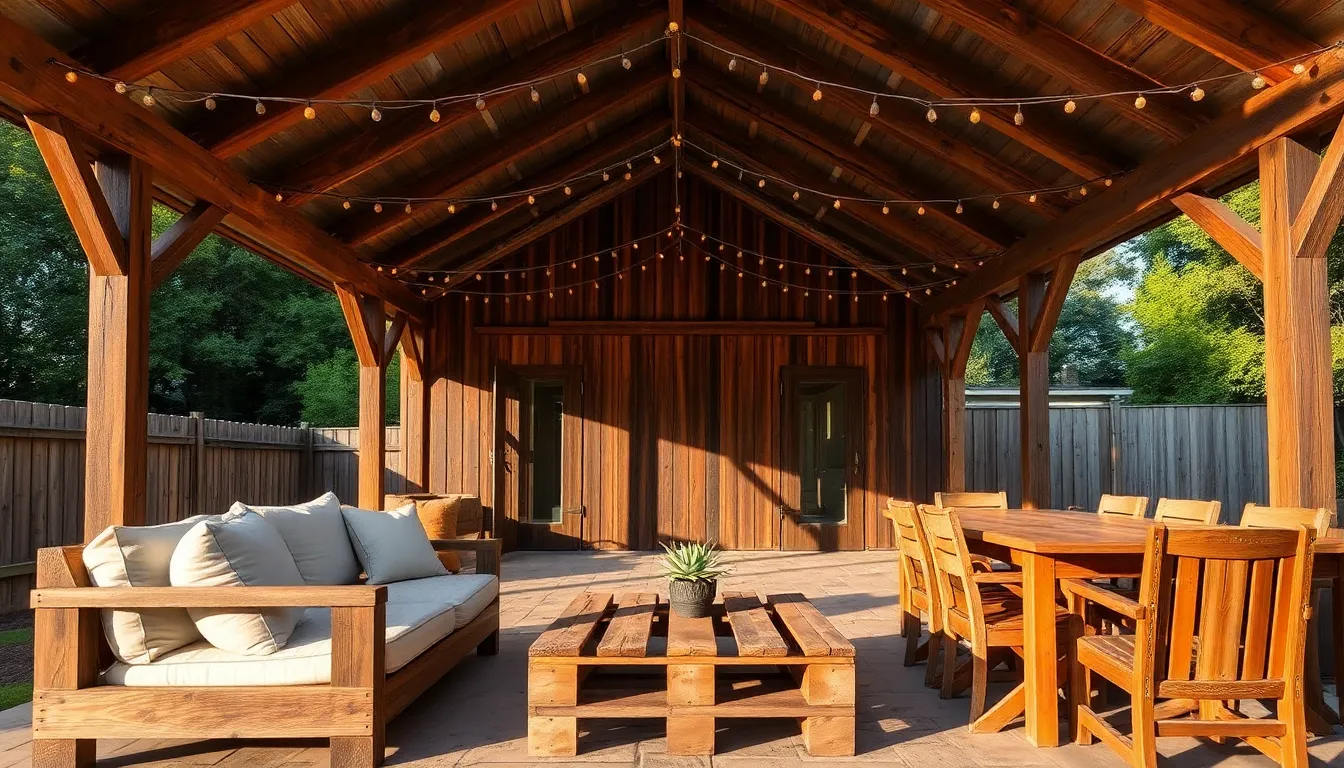Imagine transforming your backyard into a cozy retreat with the rustic charm of reclaimed wood. Whether you’re a seasoned DIY enthusiast or just dipping your toes into the world of outdoor projects, the allure of using repurposed materials to craft unique, eco-friendly shelter designs is both rewarding and within your reach. Reclaimed wood not only adds character and warmth but also tells a story, infusing your outdoor space with a sense of history and sustainability.
In this article, you’ll discover eight inspiring projects that range from simple pergolas to more intricate gazebos, each tailored to elevate your patio experience. We’ll guide you through the essential steps, offering practical tips and creative ideas to help you confidently embark on your next outdoor venture. Embrace the beauty of reclaimed wood and watch as your backyard transforms into an inviting haven that reflects your style and care for the environment.
Finding the Perfect Reclaimed Wood
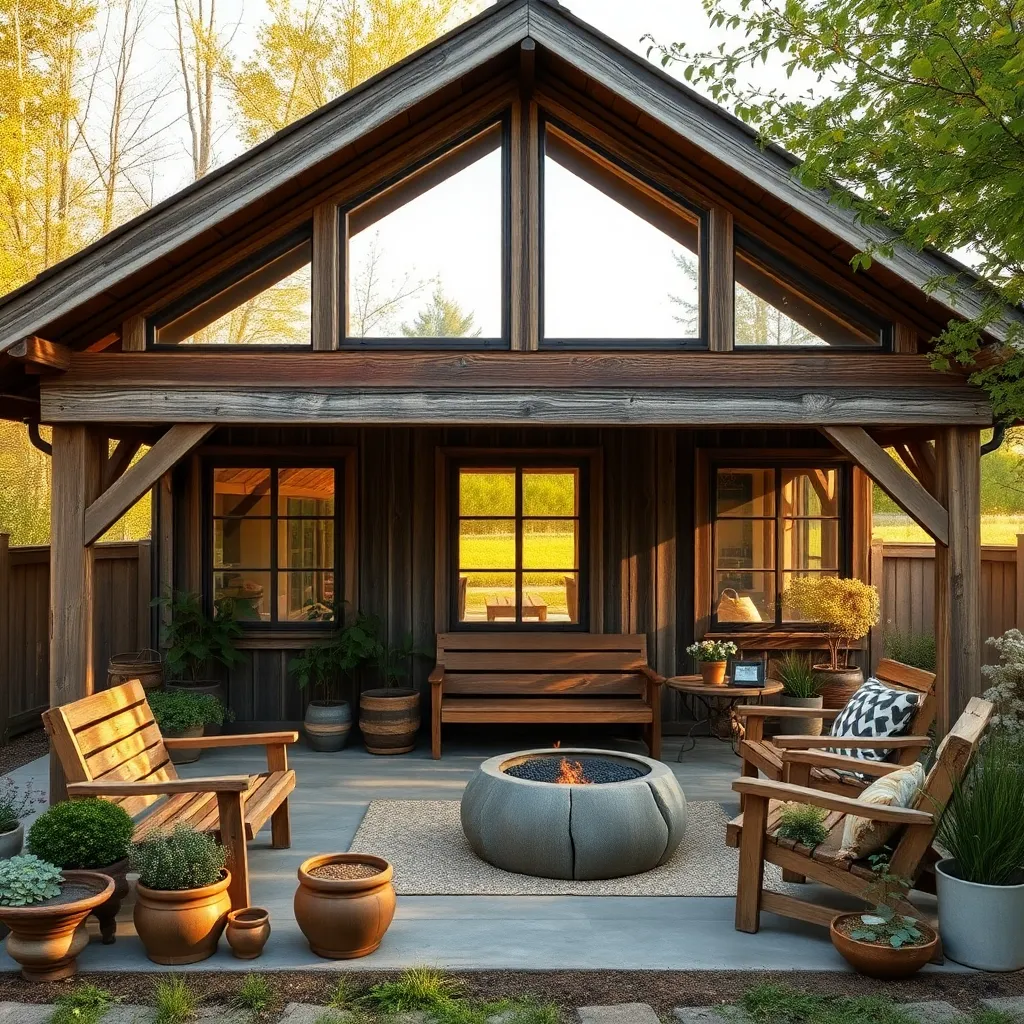
Finding the perfect reclaimed wood for your outdoor shelter project requires a bit of creativity and resourcefulness. Start by visiting local salvage yards, demolition sites, or online marketplaces where reclaimed lumber is often available. Ensure the wood is structurally sound by checking for rot and insect damage, and choose pieces with unique textures or patinas that can add character to your shelter design.
When selecting wood, consider the dimensions and thickness suitable for your project—thicker beams work well for structural support, while thinner planks can be used for walls or roofing. Incorporate a mix of different wood types and finishes for a rustic look, and remember to sand and seal the wood to protect it from the elements. For an advanced touch, use a clear weatherproof sealant to enhance the natural beauty of the wood while ensuring durability.
Designing Cozy Cabin-Style Retreats

To create a cozy cabin-style retreat using reclaimed wood, start by selecting pieces with a rustic charm that reflect the natural beauty of the outdoors. Ensure the wood is treated and weather-resistant to withstand various climates, and consider using thicker beams for structural elements like walls and roofs. Embrace natural textures by leaving the wood’s patina intact, adding character and warmth to your shelter. For a basic project, keep the design simple with an A-frame or gable roof, which not only provides an iconic cabin look but also sheds rain and snow efficiently.
Incorporate inviting design elements such as a small porch or overhang, which can be achieved by extending roof beams beyond the walls. Use reclaimed wood for flooring and outdoor furniture to maintain a cohesive aesthetic. For those seeking more advanced features, consider adding a wood-burning stove for warmth and ambiance or installing energy-efficient windows to let in natural light while maintaining insulation.
- Opt for double-glazed windows for better temperature control.
- Use non-toxic sealants to preserve the wood’s integrity.
With careful planning and the right materials, your cabin-style retreat can become a serene escape in your own backyard.
Building Rustic Garden Sheds
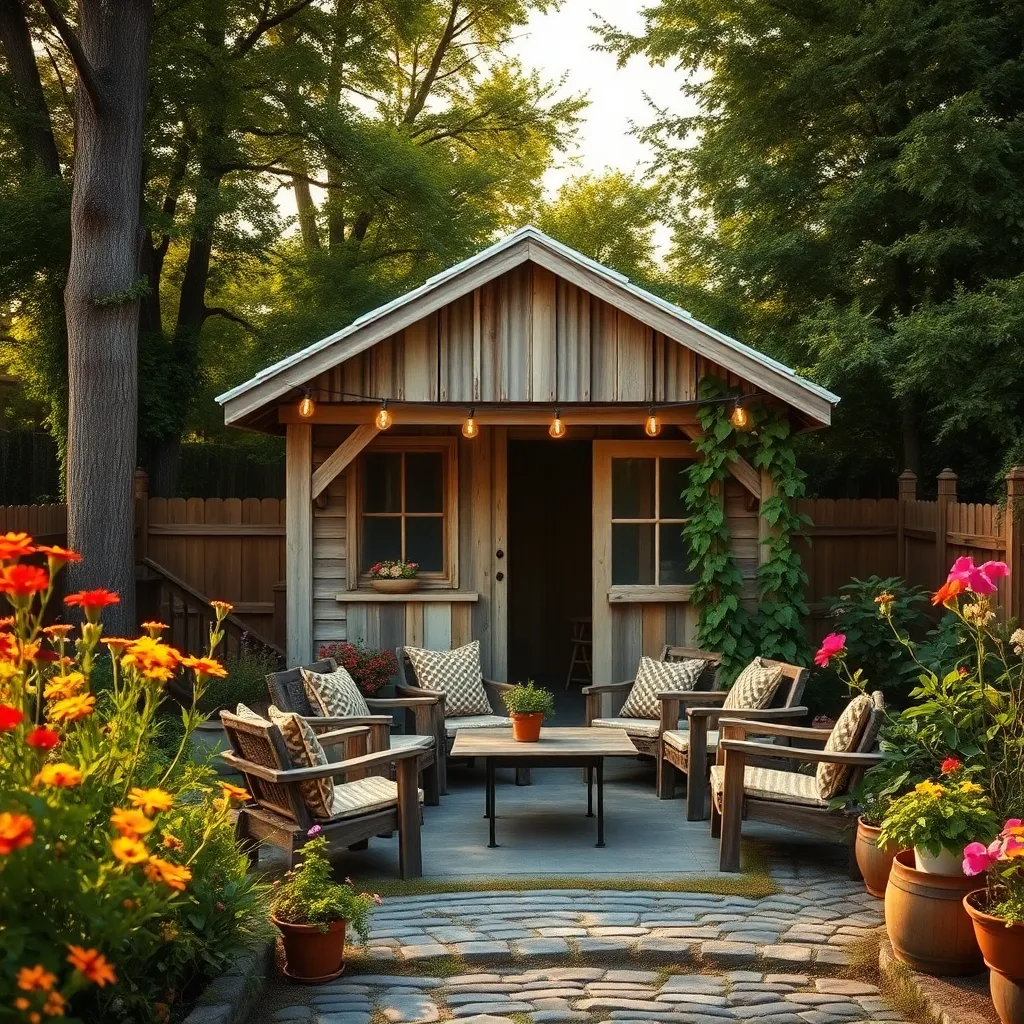
Building a rustic garden shed using reclaimed wood offers a charming and eco-friendly addition to any backyard. Begin by selecting durable wood, such as cedar or oak, which withstands outdoor conditions and brings a naturally aged look. Ensure the wood is free from rot and pests before use, and consider applying a sealant for added protection. When designing the shed, think about incorporating features like a sloped roof to prevent water accumulation and small windows for natural light, enhancing both functionality and aesthetics.
For those new to construction, start with a simple rectangular layout, but if you’re more experienced, try integrating unique elements like a Dutch door or a small porch for additional charm. Use galvanized screws and brackets for stronger joints, crucial for withstanding weather changes. Consider adding shelving or hooks inside for organized tool storage, making the shed not only a beautiful addition but also a highly practical one. By following these guidelines, you’ll create a rustic garden shed that blends seamlessly with its surroundings and serves as a functional space for gardening enthusiasts.
Crafting Vintage-Inspired Gazebos

Embrace the charm of yesteryears by crafting a vintage-inspired gazebo using reclaimed wood. Begin by selecting durable wood, such as cedar or redwood, to ensure your structure withstands the test of time. For a classic look, consider incorporating elements like turned wooden spindles and decorative brackets. Keep the design simple, focusing on an octagonal or hexagonal shape for an authentic, timeless feel. To enhance the vintage appeal, finish the wood with a weathered stain to highlight its natural grain while protecting it against the elements.
For those with some woodworking experience, adding intricate details can elevate your gazebo’s aesthetic. Consider using reclaimed windows or antique doors as side panels to create a cozy, enclosed space. Ensure stability by anchoring your gazebo with concrete footings, especially if you live in a windy area. For a polished finish, add a shingled roof, using aged copper or reclaimed slate for a truly vintage touch. Remember, small touches like hanging antique lanterns or installing a wrought iron weathervane can add character and make your gazebo a cherished garden centerpiece.
Constructing Eco-Friendly Treehouses
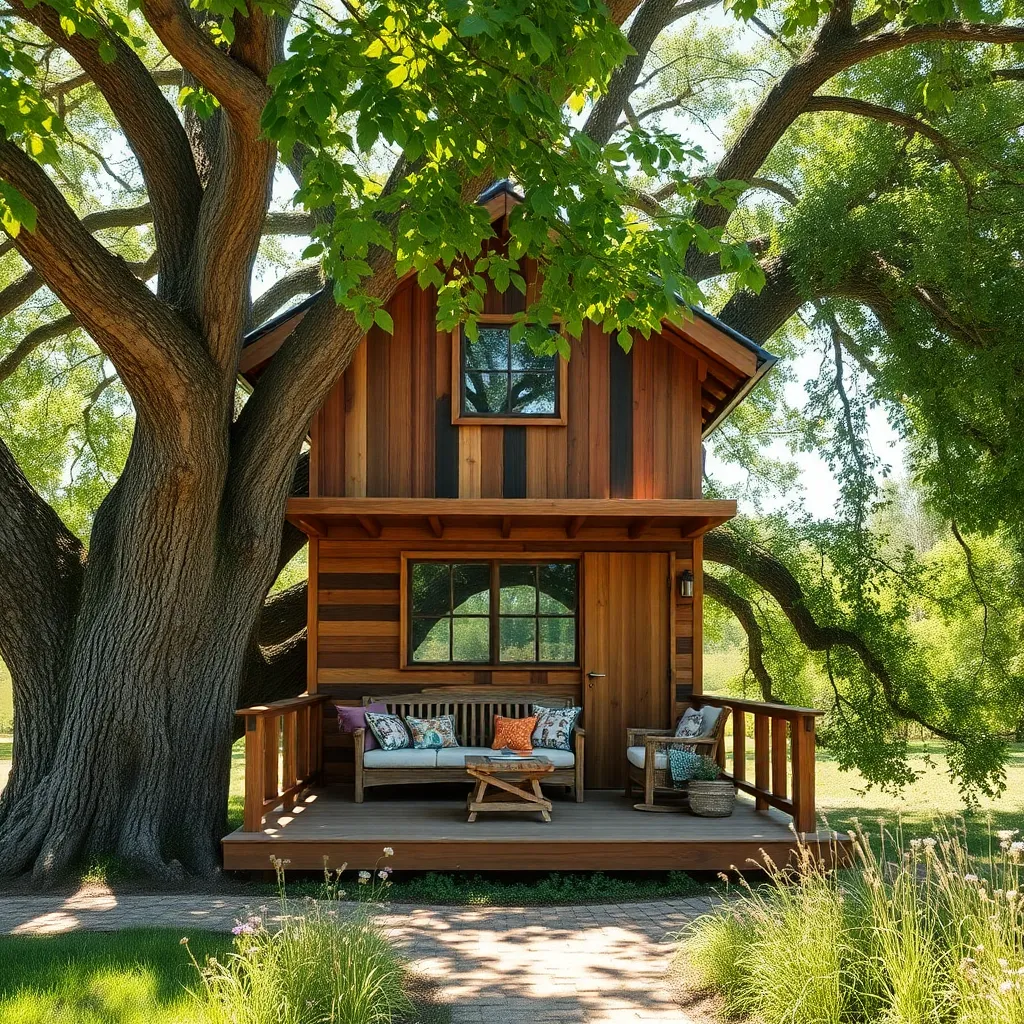
Building an eco-friendly treehouse is a rewarding project that combines adventure with sustainability. Start by selecting reclaimed wood, which not only minimizes environmental impact but also adds a rustic charm. When designing your treehouse, ensure it’s supported by robust branches and use load-bearing brackets to distribute weight evenly. Beginners can keep the design simple with a basic rectangular platform, while more advanced builders might incorporate creative features like rope bridges or slide exits.
Consider incorporating natural elements into your design, such as using the tree’s branches for support beams or integrating the structure into the tree’s canopy. For a sustainable approach, use eco-friendly finishes and sealants to protect the wood without harming the environment. Ensure the treehouse is safe by installing secure railings and using non-toxic materials. For an added touch of comfort, furnish the interior with repurposed furniture and textiles, creating a cozy retreat for both kids and adults to enjoy.
Transforming Pallets into Pergolas
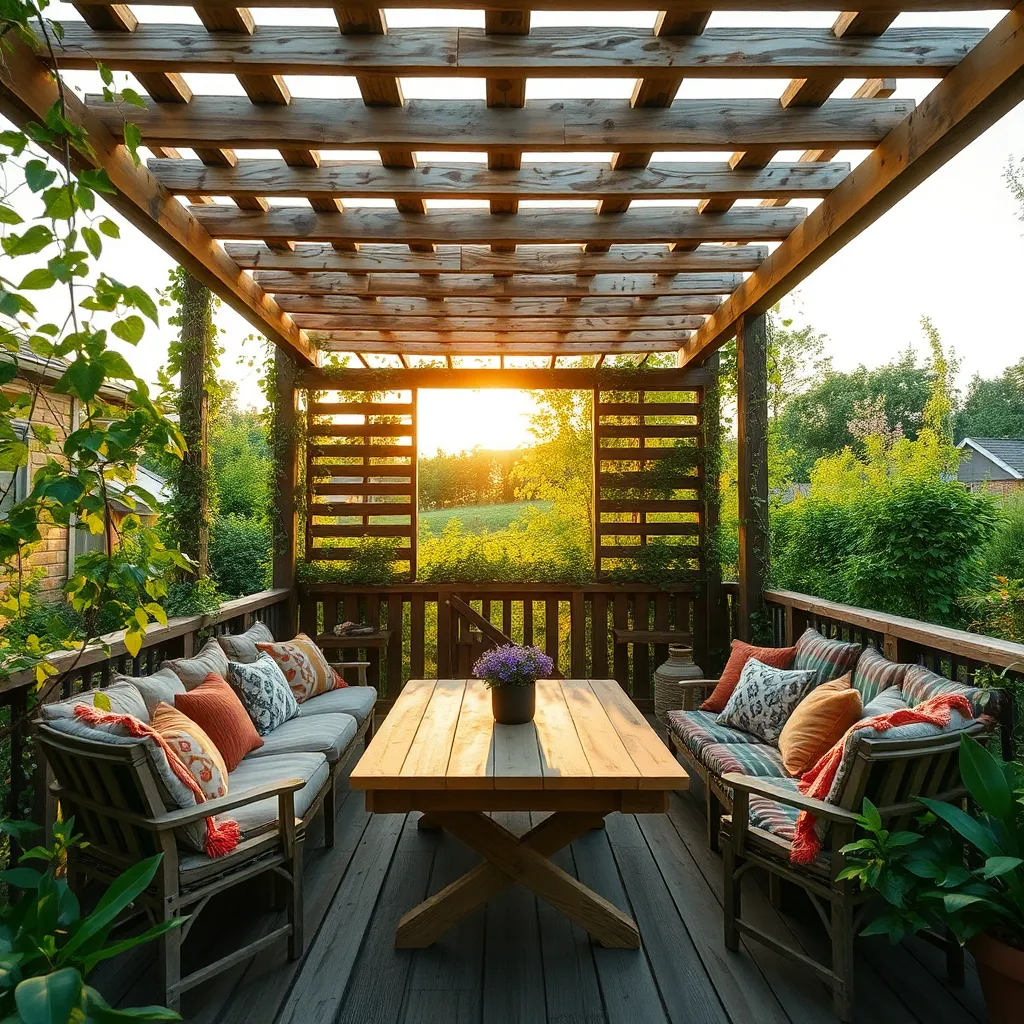
Transforming pallets into pergolas is an innovative way to create a charming outdoor retreat using reclaimed materials. Begin by selecting sturdy, untreated pallets to ensure they are safe for outdoor use, and consider adding a coat of weather-resistant sealant. For a basic structure, you’ll need approximately 6-10 pallets depending on the desired size. Arrange the pallets vertically to form the frame, securing them with brackets and galvanized screws for durability. Beginners should lay out the design on the ground first, while more advanced DIYers might experiment with lattice-style roofing using pallet slats for a more sophisticated look.
Consider enhancing your pergola with additional design elements such as climbing plants or string lights for ambiance. To secure climbing plants, attach trellises made from pallet slats on the sides, which will add both function and aesthetic appeal. For a cozier feel, drape waterproof fabric over the top, creating shade and a touch of luxury. Advanced builders can incorporate angled cuts or decorative trim for a polished finish. Remember, proper anchoring is crucial; use metal brackets to secure the structure to the ground, ensuring it withstands the elements and remains a durable addition to your garden space.
Creating Rustic Picnic Shelters
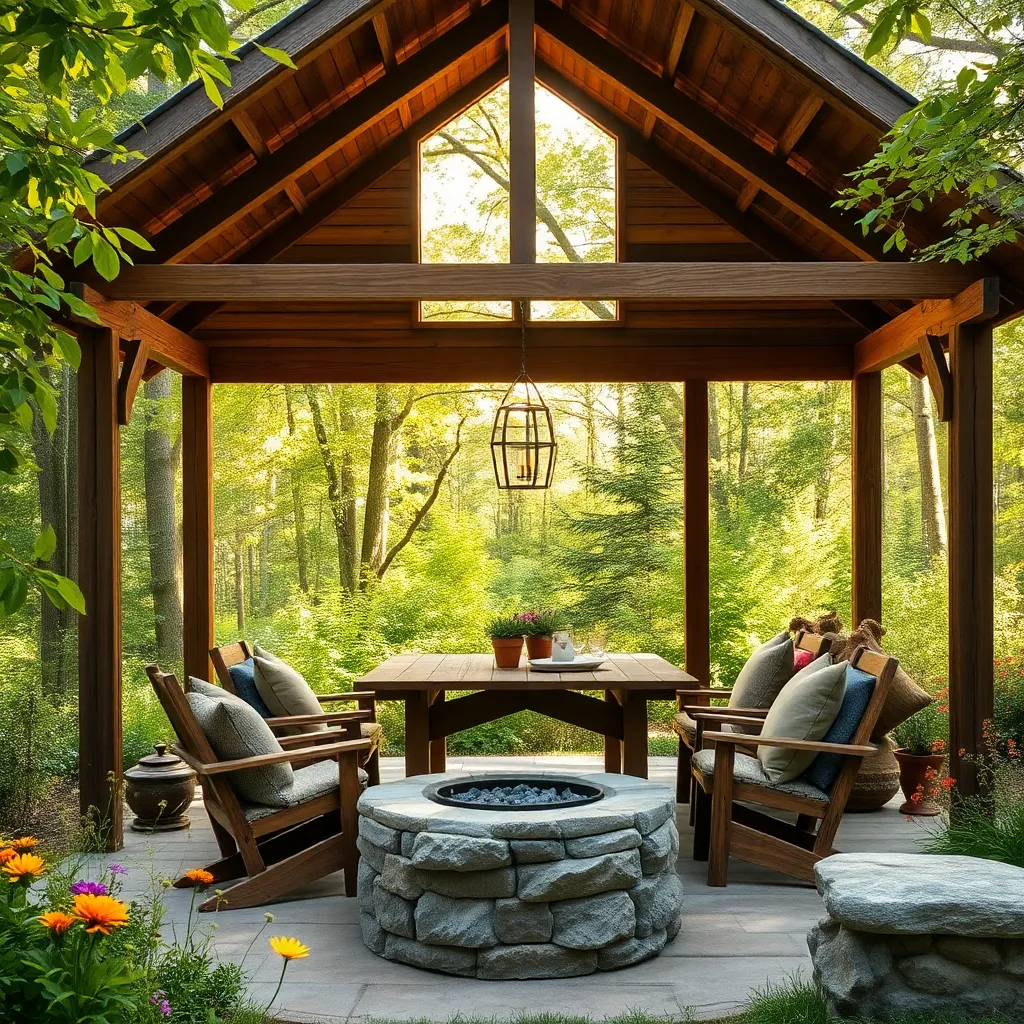
Building a rustic picnic shelter with reclaimed wood is not only sustainable but also adds a charming, natural aesthetic to your outdoor space. Start by sourcing weathered wood from old barns, fences, or pallets, ensuring it’s structurally sound and free from rot. For a basic frame, use 4×4 posts for the supports and 2×6 beams for the roof, keeping the structure sturdy and durable. Beginners can keep the design simple with a rectangular shape and an open-air roof, while more experienced builders might consider adding a gable roof for enhanced visual appeal and better rain runoff.
Incorporate design elements like a gravel or stone floor to prevent water pooling and to define the picnic area. Consider adding a rustic touch with a log bench or a live-edge table for seating and dining. For those looking to elevate their project, integrate solar-powered lights for an eco-friendly lighting solution that extends usability into the evening. Remember to treat the wood with a weather-resistant sealant to ensure longevity. By following these practical steps, you’ll create a welcoming and durable space perfect for gatherings and relaxation.
Personalizing Your Wood Shelter Space
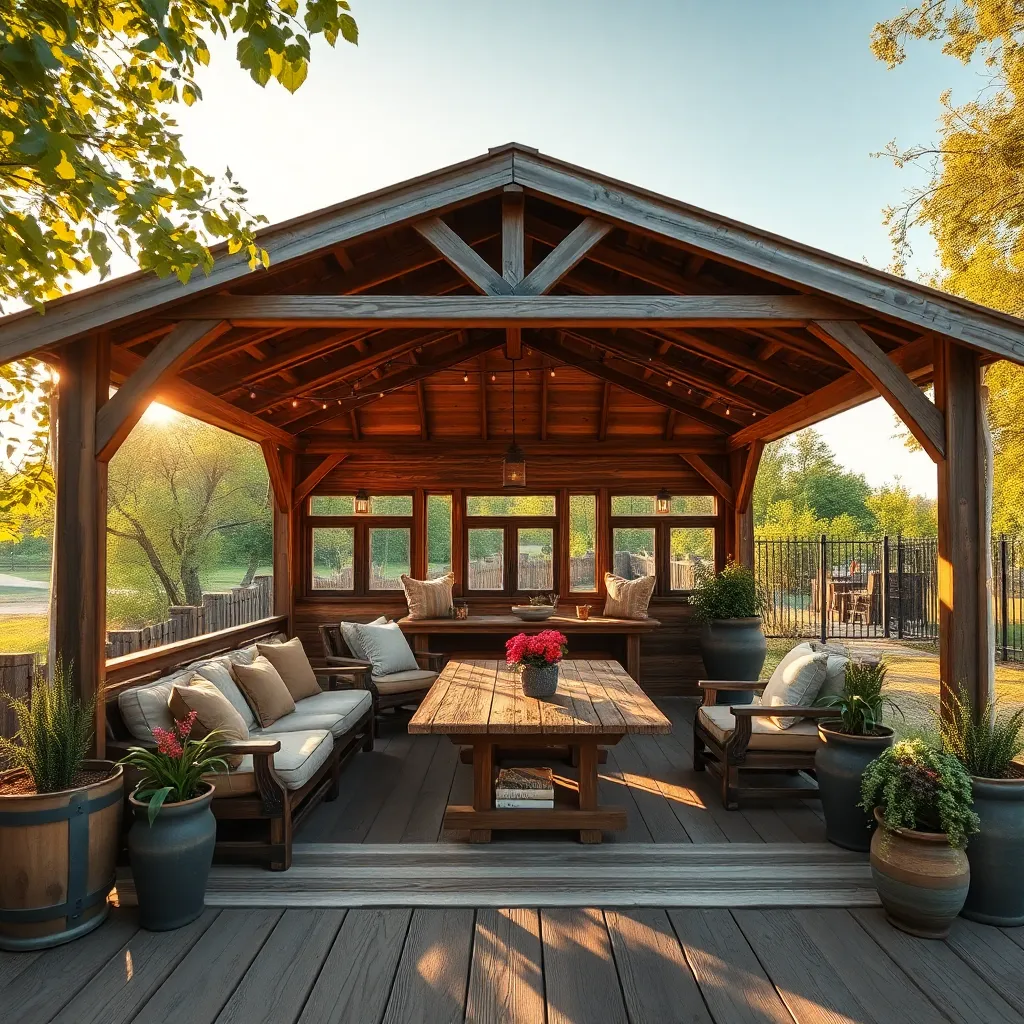
Consider incorporating personal touches to transform your reclaimed wood shelter into a unique outdoor oasis. Start by using weather-resistant paint or wood stain to add color and protect against the elements. For a cozy atmosphere, install solar-powered string lights or lanterns around the shelter’s perimeter. If you’re a beginner, focus on simple additions like hanging planters or a small shelf for decor. More experienced DIYers might add custom-built seating using leftover wood pieces, enhancing both functionality and aesthetic appeal.
To elevate your wood shelter, integrate functional design elements that reflect your style. Repurpose old windows or doors to create a charming, rustic entrance or side panel, adding character and a touch of privacy. For those with advanced skills, consider crafting a retractable awning using durable canvas and a pulley system, providing shade and shelter from rain. As you personalize, ensure materials like hardware and fasteners are suitable for outdoor use, ensuring longevity and safety. By blending creativity with practical design, your wood shelter can become a cherished retreat in your backyard.
Conclusion: Creating Beautiful Outdoor Spaces
As we wrap up our journey through ‘8 Reclaimed Wood Shelter Projects,’ we’ve explored foundational relationship concepts that, like reclaimed wood, can be transformed into strong, beautiful structures. We began with the importance of communication, understanding that open dialogue is the cornerstone of any relationship. Next, we delved into trust, reminding ourselves that it must be nurtured and rebuilt over time. We addressed the significance of shared goals, the art of compromise, and the power of empathy to truly connect with our partners. We also highlighted the need for personal space, the strength found in vulnerability, and the magic of shared experiences.
Now, take a moment to reflect on these concepts and choose one to focus on in your relationship this week. Perhaps it’s a heartfelt conversation or planning a shared experience.
Remember, successful relationships are built on continuous growth and effort. Bookmark this article as a resource for guidance on your journey. With commitment and these principles in mind, the future of your relationship holds boundless potential for joy and fulfillment. Let’s build something beautiful together.

